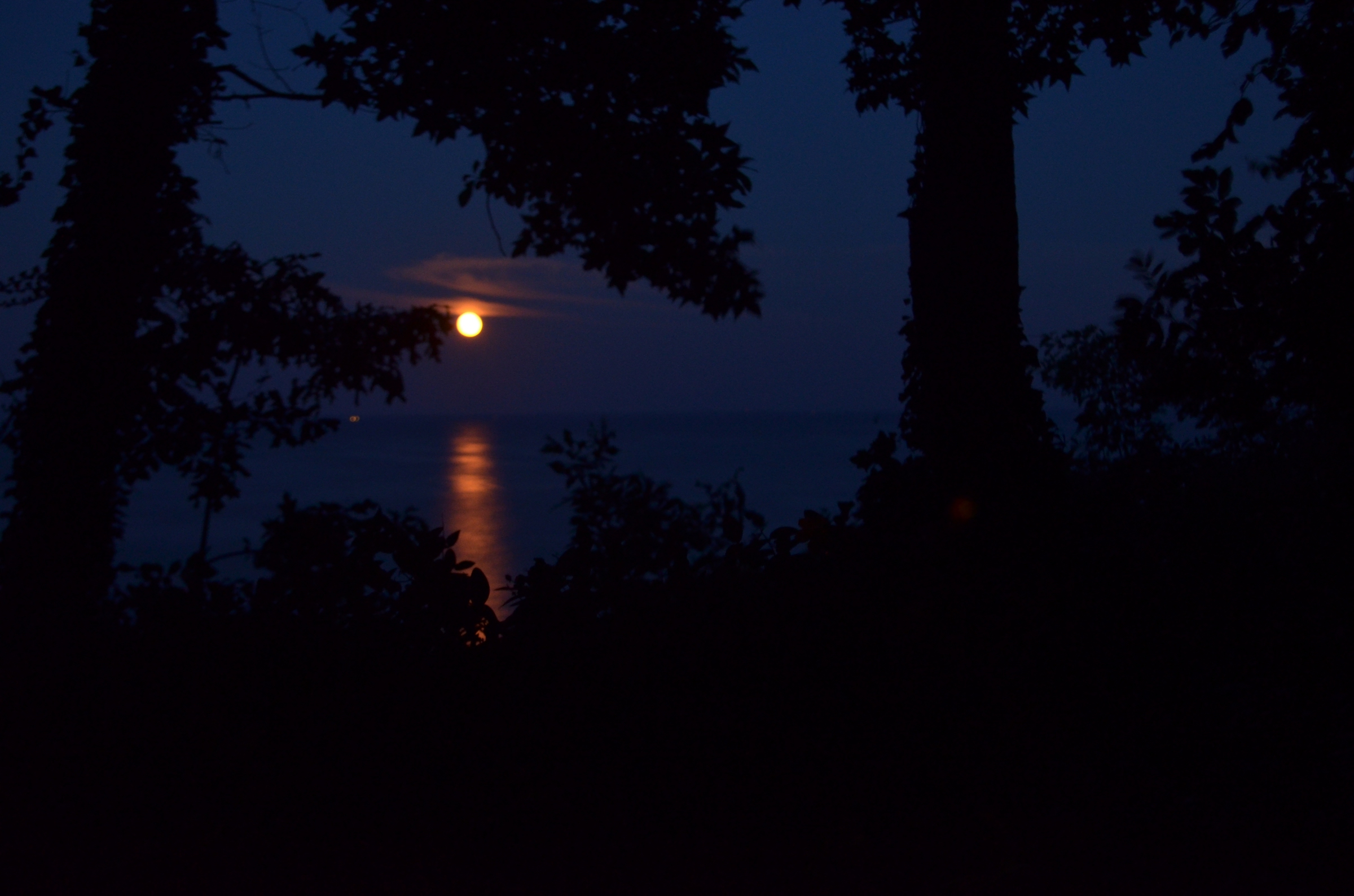How to see the full moons on Oct. 1 and Halloween
Sneak a peek at the harvest and blue moons.

Get ready to gaze on the first of two full moons slated for October; the first will dazzle sky watchers this Thursday (Oct. 1) and the second will shine eerily later this month on Halloween (Oct. 31).
It's rare to have two full moons in one month. To mark the occasion, the second full moon will be known as a "blue moon," although it won't actually appear blue. (The moon looks blue only when there are massive amounts of particles in Earth's atmosphere, such as dust from a volcanic eruption, which scatter different wavelengths of light differing amounts.) Another "blue moon" definition highlights the third of four full moons in a single season.
To see Thursday's full moon, also known as the harvest moon, set an alarm for 5:05 p.m. EDT (2105 UTC), the moment when the moon appears "opposite" the sun, in Earth-based longitude, according to NASA.
Related: Gallery: The fantastic full moon
If you're busy at that moment, you can still catch the celestial show, as the moon will appear full for three days, starting today (Sept. 30) through Saturday morning (Oct. 3).
The harvest moon is tied to the time of year when farmers historically had to rely on moonlight when they worked late. In fact, the harvest moon is an old European name; it was first published in 1706, according to the Oxford English Dictionary. Most years, the harvest moon shines in September, but this year it's lighting up the night sky in October, as it's the full moon closest to the fall equinox, which fell on Sept. 22 this year. (As a result, September's full moon took the name "corn moon.")
Other names for the Oct. 1 moon include the travel moon, dying grass moon and sanguine or blood moon (per the Algonquin tribes, who lived in the American Northeast, at least according to the now-defunct 1930s Maine Farmer's Almanac). This full moon also corresponds with autumnal and harvest festivals in Asia, including the Moon Festival and Mooncake Festival in China, and Chuseok, a harvest festival in Korea that's observed when city dwellers return to their hometowns to pay respect to the spirits of their ancestors, according to NASA.
Sign up for the Live Science daily newsletter now
Get the world’s most fascinating discoveries delivered straight to your inbox.
Meanwhile, the blue moon will shine brightly at 9:49 a.m. EDT (14:49 UTC) on Halloween. Traditionally, this full moon would have helped trick-or-treaters find their way in the dark, but this year the Centers for Disease Control and Prevention (CDC) says that "participating in traditional trick-or-treating, where treats are handed to children who go door to door," is a high-risk activity, due to the COVID-19 pandemic.
Lower-risk activities include carving pumpkins, having a virtual costume contest and watching Halloween-related movies with your household, the CDC said. Moderate-risk activities include socially-distanced trick-or-treating (when a bowl of candy is left out for little ghouls) and socially-distanced costume parades.
October skygazers can also see other noteworthy events this month. For example, comet NEOWISE (named for NASA's Near-Earth Object Wide-field Infrared Survey Explorer, which spotted the comet; and also known as comet C/2020 P1) might be visible the morning of Oct. 17 or 18, NASA said.
What's more, the current background of stars will appear to move westward each morning, while Venus will appear to shift slowly eastward, NASA reported. Venus and the star Regulus will appear at their closest this week, on Oct. 2 and 3.
Originally published on Live Science.

Laura is the archaeology and Life's Little Mysteries editor at Live Science. She also reports on general science, including paleontology. Her work has appeared in The New York Times, Scholastic, Popular Science and Spectrum, a site on autism research. She has won multiple awards from the Society of Professional Journalists and the Washington Newspaper Publishers Association for her reporting at a weekly newspaper near Seattle. Laura holds a bachelor's degree in English literature and psychology from Washington University in St. Louis and a master's degree in science writing from NYU.









